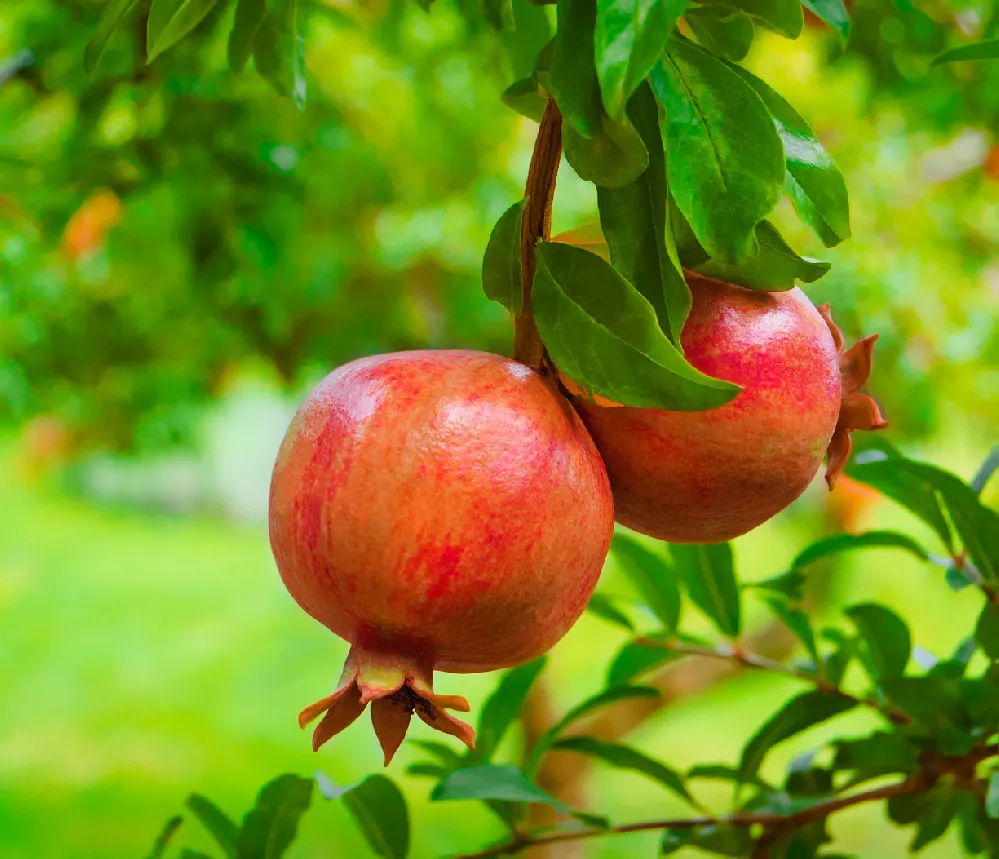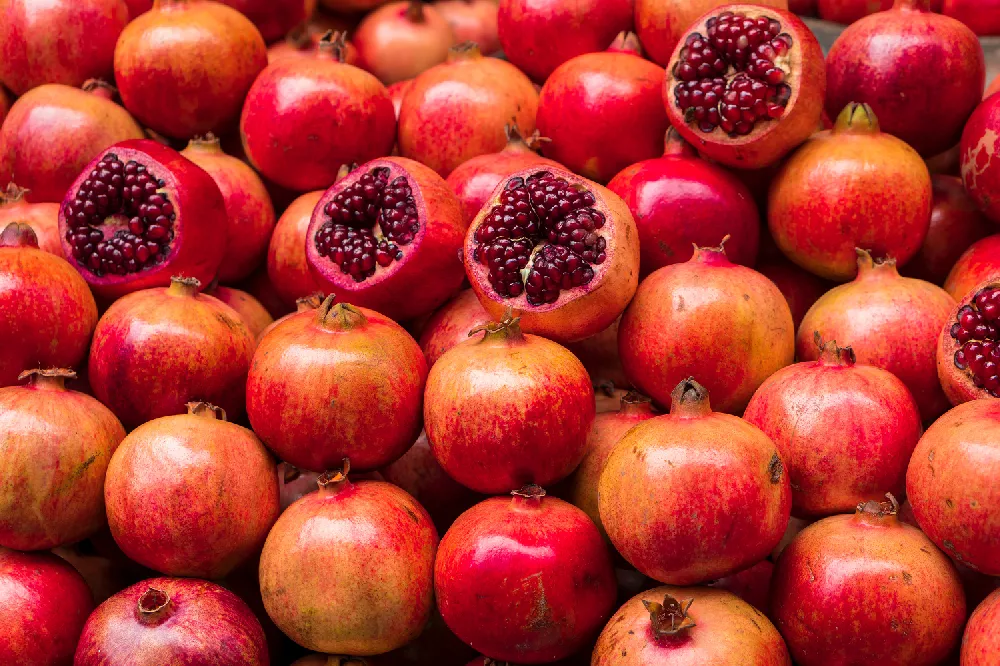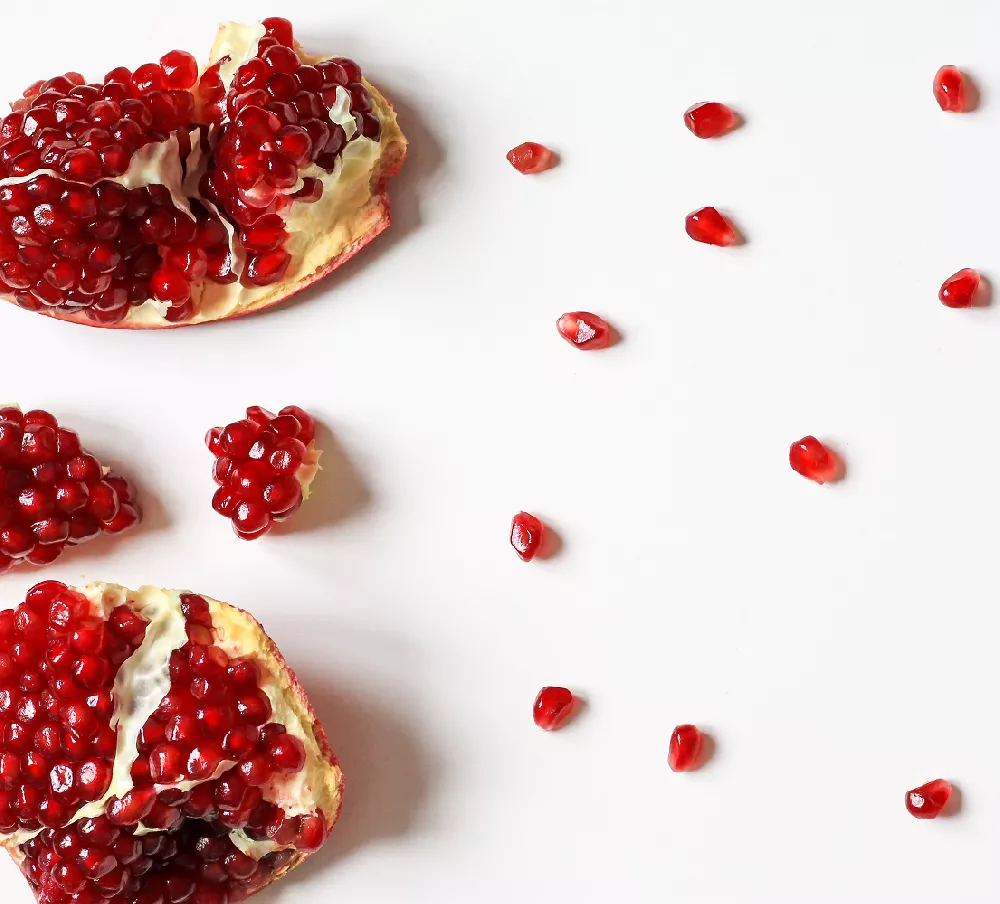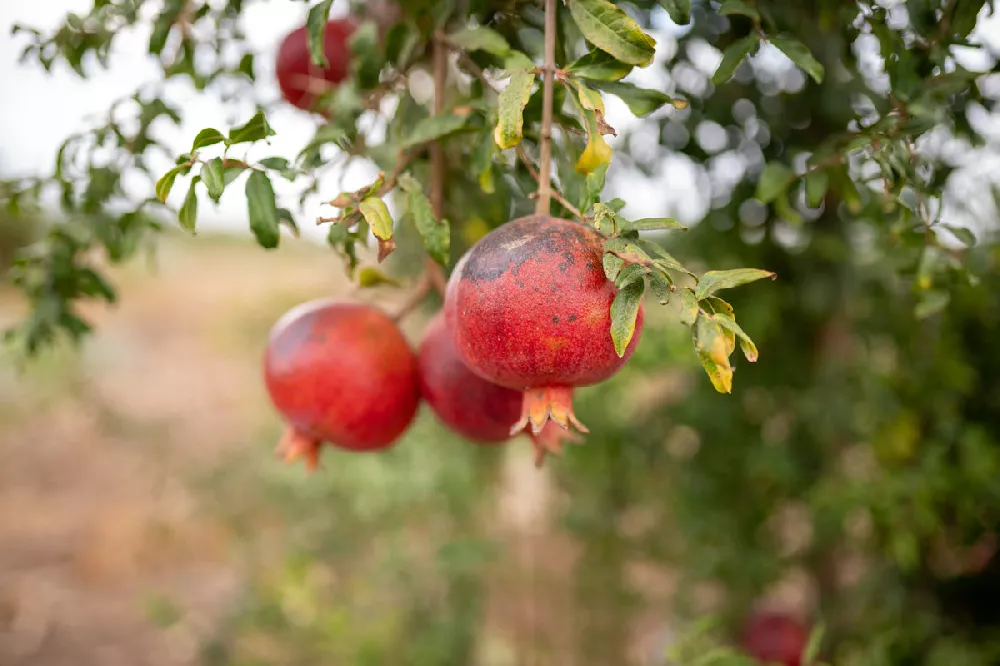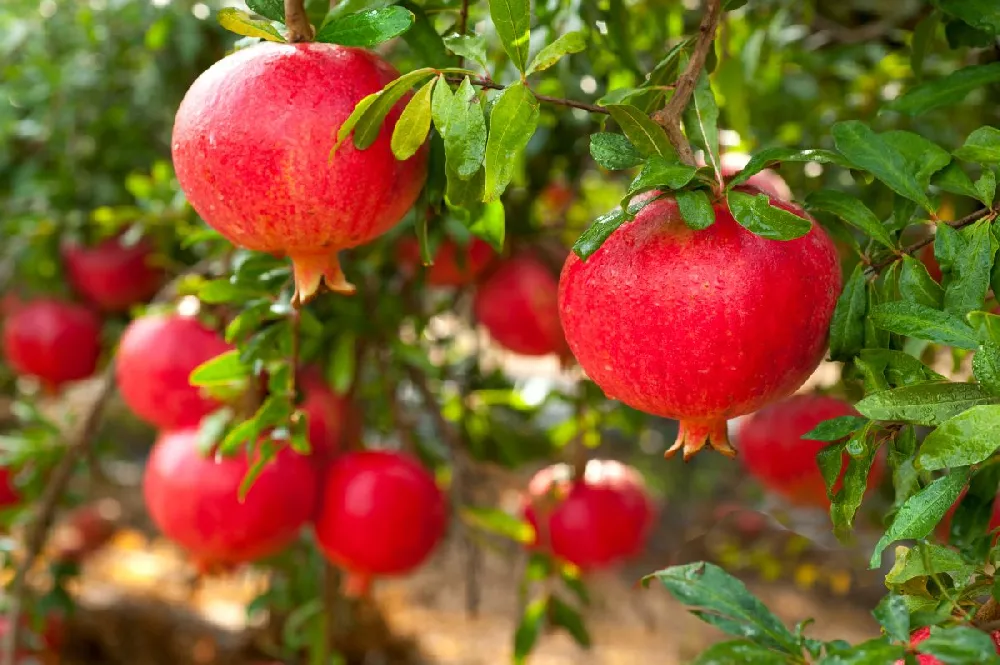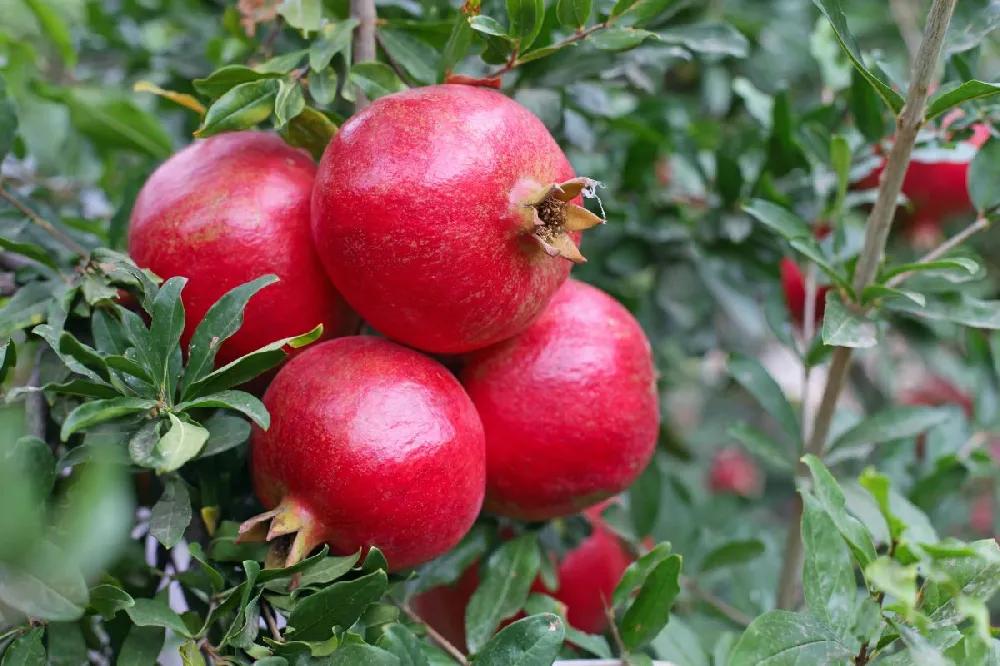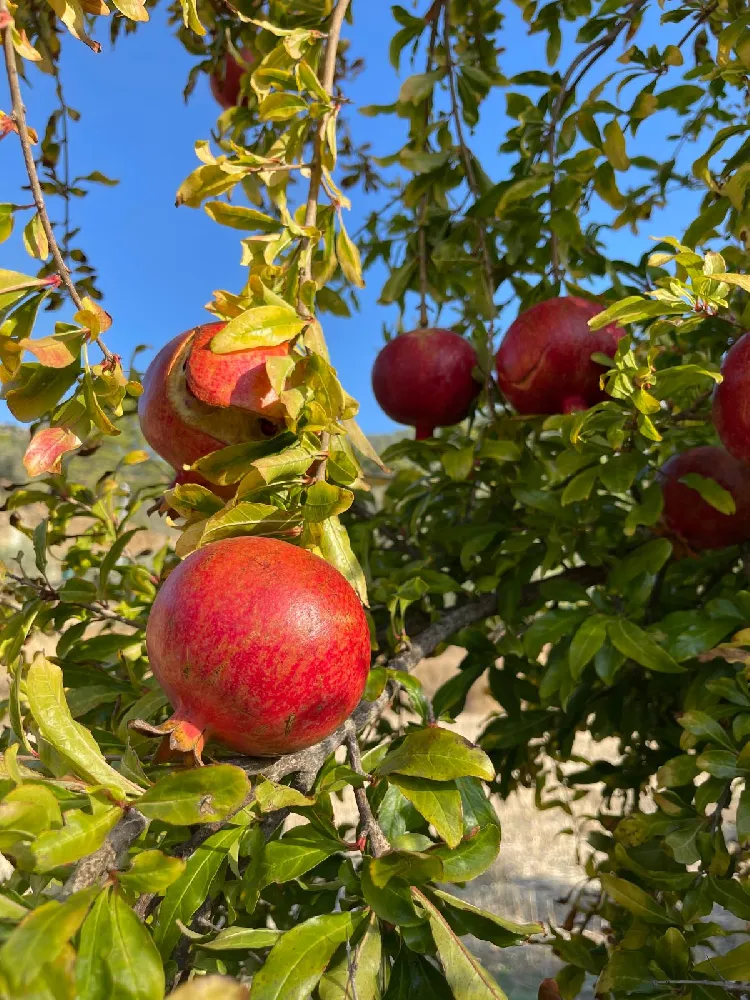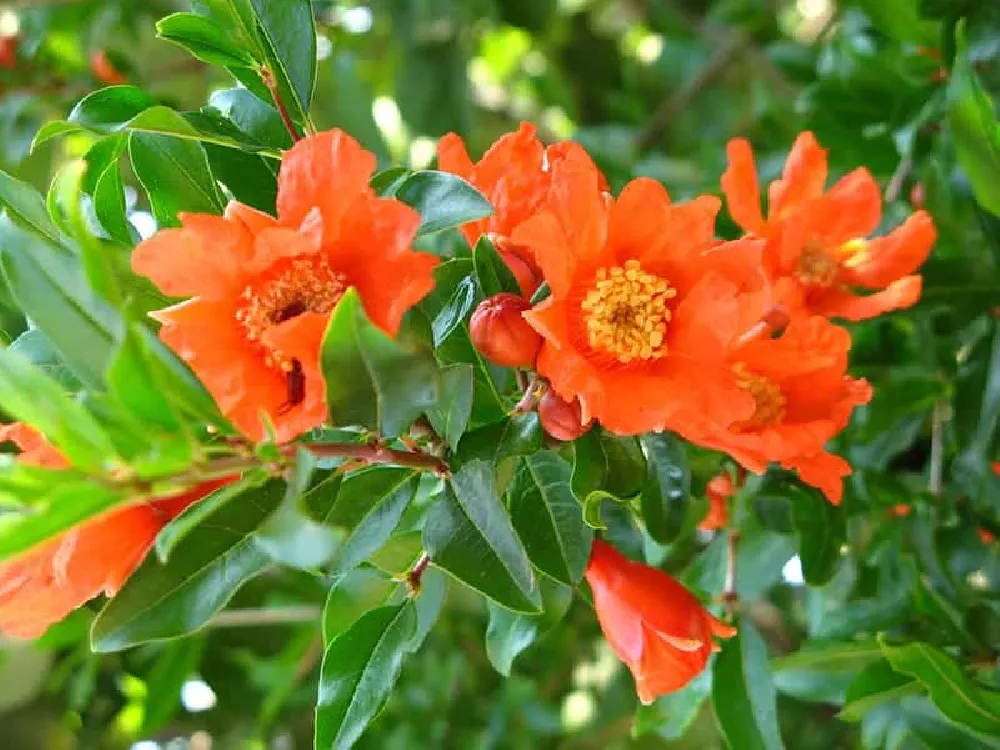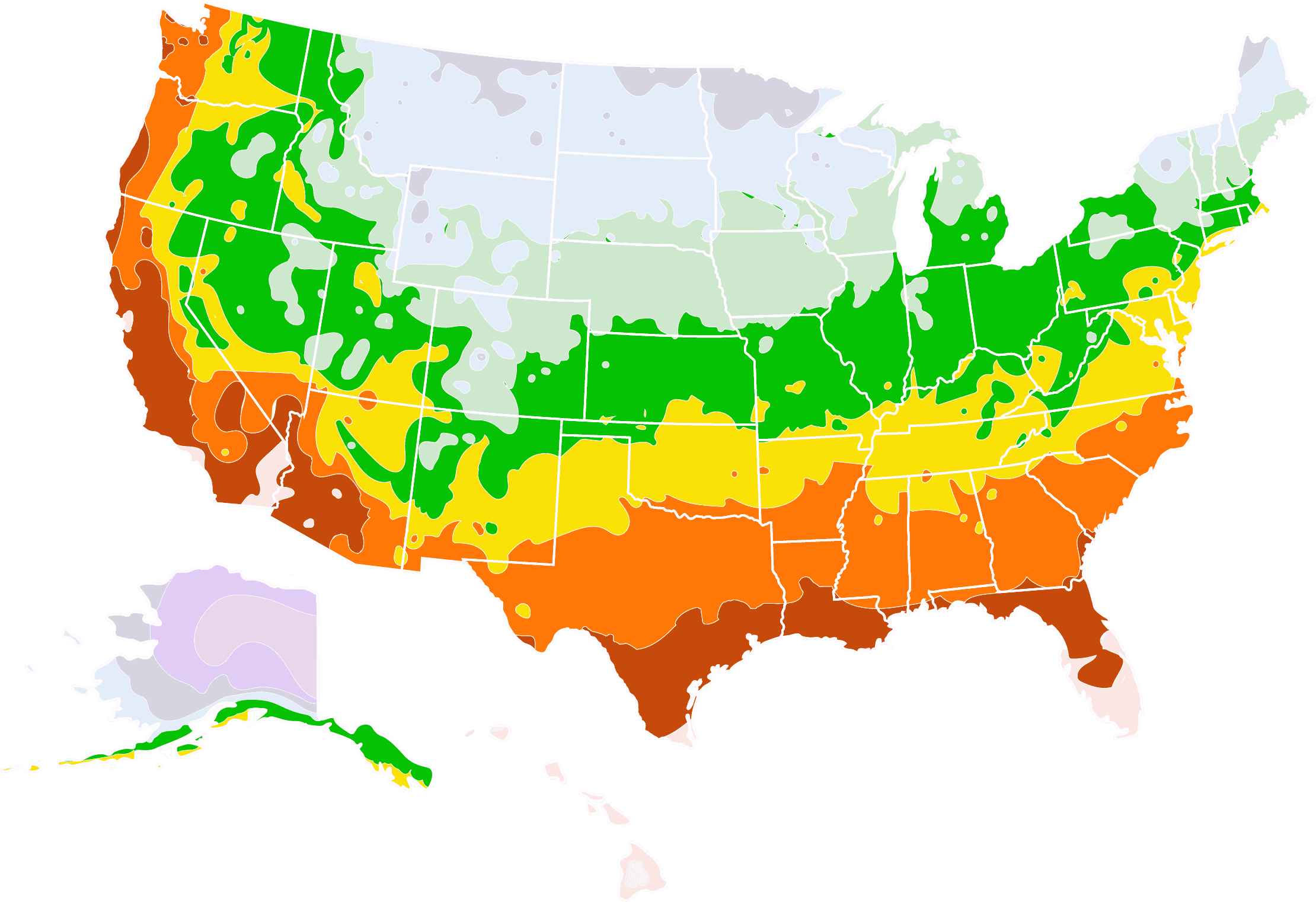- Home >
- Edible Plants >
- Cold Hardy Russian Red Pomegranate
Cold Hardy Russian Red Pomegranate for Sale - Buying & Growing Guide
- Ships in 1-2 days
- 1-Year Warranty Eligible
- Pots or accessories are not included unless specified in the product options.
Shipping Details:
Once your order is shipped, you’ll receive an email with a tracking number and estimated delivery date. Most orders ship immediately, but some items are seasonal and may only ship in spring or fall. These products are noted on the website.
Those who have tried to grow pomegranates in the past likely know that a typical pomegranate tree can be difficult to care for and keep healthy. Fortunately, the cold hardy Russian red pomegranate tree eliminates most of these growing challenges while providing a bountiful harvest of healthy pomegranates. The cold hardy Russian red pomegranate, Punica granatum ssp., is unlike related trees in that it can survive in colder regions, including zone 6. Simultaneously, this tree can also survive in hotter climates and withstand drought and disease.
- The cold hardy Russian red pomegranate survives surprisingly well in both cold and warmer climates.
- It has excellent resistance to drought, pests, and diseases.
- It provides a reliable harvest of beautiful red pomegranates.
Plant Care
Sunlight

This plant should receive at least six to eight hours of light per day.
Watering
Typically, you should water this plant about once per week during the growing season.
Fertilizing

Fertilize in spring and fall with a balanced fertilizer or one that is nitrogen-rich.
Planting and Care
Planting instructions
The most important soil characteristic for the cold hardy Russian red pomegranate is drainage. As long as your garden soil drains efficiently, it does not matter so much if it is sandy soil, clay soil, or loamy soil. The cold hardy Russian red pomegranate is also adaptable to both acidic and alkaline soils. It’s wise to locate this tree where there is full sunlight, but it may survive in the partial shade as well. However, in partial shade, the cold hardy Russian red pomegranate will likely flower less, which will lead to lower fruit production as well.
Watering and nutrients
A mature cold hardy Russian red pomegranate will have admirable drought tolerance. However, that does not mean you should let your tree go without regular waterings. Watering your cold hardy Russian red pomegranate about once per week will help this plant continue its healthy growth and develop plenty of healthy fruits. Fertilization should take place twice per year, once in early spring and once in the fall. For both feedings, you should use a general-purpose fertilizer; one that is high in nitrogen; or an organic soil amendment, such as compost.
Pollination
The flowers of the cold hardy Russian red pomegranate are quite attractive and play a vital role in fruit production. These flowers arrive in late spring and early summer and will attract plenty of pollinator species. Each cold hardy Russian red pomegranate is self-fertile, meaning that a single tree can produce fruit upon successful pollination. However, the fruit yields you receive from this plant will be greater if you grow a second tree to allow for cross-pollination.
Pruning
Since the cold hardy Russian red pomegranate tree blooms on new growth, it is permissible to prune this tree in spring, as doing so does not threaten flower and fruit production. When pruning any fruit tree, you should encourage a strong form that is well-suited to carrying heavy fruits. Often this means you should remove branches that grow at a narrow-angle to the trunk — they tend to be weaker and more likely to break under the weight of the fruits.
Pests, diseases, and animals
Many pomegranate trees can face complications related to fungal infections. However, the cold hardy Russian red pomegranate is far more capable of circumventing these issues. Likewise, pomegranate trees tend to experience many fruit-related problems, including fruit rot, fruit borers, and fruit splitting. Again, this is not the case for the cold hardy Russian red pomegranate. But while this plant has strong resistance to pests and diseases, the occasional infestation of aphids or other common garden insects is a possibility.
Harvesting
Pomegranate fruits do not continue to ripen off of the plant, which is why you should wait until your fruits are fully ripe and red before you remove them. To remove a ripe pomegranate, you should use pruning shears to make a clean cut. When harvesting, cut each fruit as close to the branch as you can. The harvest season for a cold hardy Russian red pomegranate tree typically takes place during the late summer and early fall months.
Achieving maximum results
As the name suggests, the cold hardy Russian red pomegranate is more cold-hardy than other pomegranates. However, this tree does not survive year-round outdoors in zones 5 and colder. Still, those living in those regions can grow their pomegranate trees in containers and bring them indoors during the colder months. Any time the outdoor temperature drops to zero degrees Fahrenheit or lower, you should bring your cold hardy Russian red pomegranate tree indoors to keep it alive and thriving.
FAQs
What are a few signs that a pomegranate is ready for harvest?
How can you use pomegranates in the kitchen?
The most straightforward way to enjoy your pomegranate harvest is to open your pomegranate and remove the seeds you find inside. These seeds are the edible portion of the plant and have a lovely taste. You can use your pomegranates to create pomegranate juice as well. Additionally, another excellent way to eat your pomegranate seeds is to add them to fresh salads. Some people include pomegranate seeds in a wide range of baked goods too.
How do you store pomegranates?
The ideal way to store a pomegranate is to place it in a place that is consistently cool and dry. Your storage area should also be relatively dark while maintaining good air circulation. With those conditions in place, you can expect your pomegranates to remain fresh for up to two months. When in doubt, simply store your pomegranates the same way you would store an apple.
Compare Similar Products
You can't add more Product Name - Product size to the cart.
OK